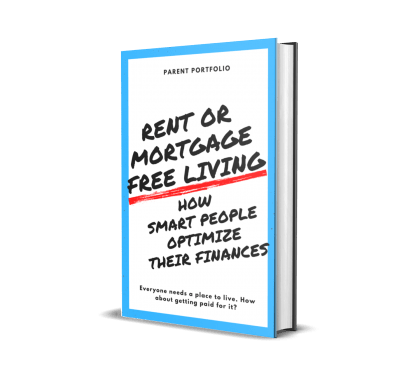How to Start Investing: A Beginner’s Step-by-Step Guide

Investing has never been easier, yet never more confusing. Whether you want to invest in stocks, ETFs, mutual funds, or real estate, it’s best to start with the basics and the foundational investing principles. In this quick guide, we’ll help to demystify how to start investing by covering four areas:
- Key Principles of Investing
- Understanding Your Investment Options
- Choosing Your Investment Strategy
- Choosing an Investment Broker
Key Principles of Investing
How much do you know about the basics of investing? Let’s start with the fundamentals.
1. Diversification Matters
If you’re going to invest in stocks, diversifying your stock portfolio keeps your investment assets from being too heavily weighted to one specific company. Recall the tech bubble or the financial crisis. If you were invested in a tech stock in 2000 or a bank stock in 2008, you probably lost your shirt (and more).
In investing, consider buying a diverse mix of stocks across different sectors to help shield you from concentration risk and to spread the risk of losing your money. Simply put, it’s the same concept as eating a well-balanced meal or not putting all your eggs in one basket!
The best way to implement a diverse portfolio of stocks is to split the pool of money you have into small chunks, no more than 5% of your total, and allocate each of these chunks to a different stock.
If you don’t have enough dollars to invest in a diverse set of stocks, some brokerage firms allow you to buy slices of stocks. For example, if you can’t afford to buy 1 share of Amazon stock for $3000, you can still buy a slice of it through what’s called fractional investing.
2. You Can’t Time the Market
If you think you can make the right trades at the right time, you must choose the right stocks at the right price and at the right time.
Recall in early 2020 when most of us didn’t see the “covid-crash” coming. Many sold their investments when fear struck a deep chord, and stock prices were at their 52-week lows. Then the market sharply recovered, leaving those who sold low behind.
Think about the market like a roller coaster. If you buckle up and ride it out, you will most likely end up fine. But what happens when you try to hop in or out of it while it’s twisting and turning?
Here’s a simple example: if you invested $10K in the S&P 500 from January 1, 1999, to Dec 31, 2018, your investment would be worth $29,845 if you stayed fully invested. If you missed the top 10 days of performance over this 20 year period, your account would be worth $14,979. If you missed the top 30 trading days over this period, your account would be worth $6,316.
Missing just a few of the market’s best days can significantly hurt your investment returns.
Predicting the winners and losers is a fool’s game. If you’re already invested, don’t let market volatility control your emotions and seduce you into panic selling. Day trading may sound like a sexy thing to do, but when 95% of all traders fail to generate positive returns, it’s really not so hot.
3. Stay Invested Over the Long-Term
As opposed to timing the market, time in the market over the long term is what matters. That means buying then holding as the market goes through its cycles.
Why is that so important? Because returns compound over time. Compounding returns is like math magic. The longer you stay invested, the greater the opportunity for growth on top of growth.
For example, if you invested $1,000 earning 6%, after 25 years, you’ll have about $4,300. If you added an extra $10 per month to the account, after 25 years, you’d have nearly $11,000.
By starting to save and invest early, you can benefit sooner from this math magic. And over the course of decades, compounding growth can make a huge difference.
4. Know Your Risk Tolerance
Do you know how much risk you’re willing to take to achieve a certain level of return? Risk tolerance essentially means how much risk you’re comfortable taking or flipped the other way, how much investment loss you are willing to stomach.
Your age, income level, time horizon, and financial goals are examples of key factors that go into your overall risk tolerance.
For example, if you’re in your 20s, not worried about losing your investments, and don’t plan to touch your money for a very long period of time (i.e., 10+ years), you are likely an aggressive investor willing to stomach greater loss than someone in their 50s, looking to retire early.
Time horizon is how long you’d need to keep your money invested in meeting your financial goals, such as buying a house, saving for your child’s education, or retiring comfortably. If your time horizon is a year, you shouldn’t be investing in super risky investments. If you do, you risk a huge portion—if not all—of your original investment amount (or principal).
And ultimately, it’s your risk tolerance that determines your investing plan and asset allocation.
Asset allocation means the optimal combination of different asset classes within your portfolio. An asset class is a group of investments that have similar characteristics. Stocks or equities, bonds, cash, real estate are examples of different asset classes.
Think of it this way: apples and grapes are considered fruits, and broccoli and carrots are considered veggies. Fruits and veggies are hypothetical asset classes!
Stocks and real estate tend to be riskier than bonds and cash, so if you have a high-risk tolerance, your investments or portfolio will hold a higher allocation to those riskier asset classes.
Understanding Your Investment Options
There are a growing number of investment options available to investors today. And we understand that it’s not easy to sort through them all, so we’ll cover the most common options that most new investors consider.
Stocks vs. Funds
The key difference between stocks and funds is that funds have many (often 100+) stocks as holdings. Funds are more diversified than single stocks, and as such, they are an excellent choice for a new investor.
There are two different types of funds: mutual funds and exchange-traded funds (ETFs). For long-term investing, both of these types can do the job. The most important key difference between the two are:
- ETFs can be bought and sold like stocks on an exchange; mutual funds are not traded on an exchange and trade only once per day after the markets close.
- Mutual funds have more complex structuring than ETFs with varying fees and are likely to be less tax-efficient and more costly than ETFs.
- Mutual funds are more commonly found in retirement plans like 401(k), hence their popularity.
But here is the main thing you should look for in mutual funds and ETFs if you’re starting to invest. Invest in those mutual funds and ETFs that track an actual index, such as the S&P 500.
Why does this matter? Because research has shown that professional money managers and funds that try to beat an index underperform on average. According to Morningstar, only a quarter of all stock-picking funds have actually beat their index rivals’ average over the last 10 years. So if you can’t beat the market, buy the market.
To help you choose your investment carefully (i.e., due diligence), Finnyvest (by Finny) is an easy-to-use tool that calculates a “Finny score” for each stock or funds you research. The Finny score removes subjective opinions in its calculation and uses the same set of criteria, such as cost, valuation ratios, and performance, across all stocks and funds it scores.
Choosing Your Investment Strategy
There are as many investment strategies in today’s investing world as there are types of cereal at your favorite grocery store. For the sake of simplicity, we’ll cover the two dominant schools of thought: value and growth investing.
Value vs. Growth
Value investing is a strategy for identifying cheap or undervalued stocks based on financial ratios. In contrast, growth investing focuses on companies expected to grow at above-average rates compared to the market.
One of the key parameters value investors use is the price-to-earnings ratio (P/E ratio). It’s a metric that helps investors determine the market value compared to the company’s earnings. The P/E ratio shows what the market is willing to pay today for a stock based on its earnings.
Growth investors tend to favor younger companies poised to substantially grow their revenue and earnings in the future. When evaluating stocks, growth investors look for historical and future earnings growth and several other parameters.
Both growth and value investors may (or may not) rely on analyst price targets. A price target is when an analyst believes a stock is fairly valued relative to its earnings. When an analyst raises their price target for a stock, they generally expect the stock price to rise. But keep in mind that analysts are not always very good at predicting stock prices! So, think twice before basing your decision on a price target.
If there is one thing we want you to remember about investing in single stocks, it’s this:
Stock performance is not a result of any single factor (e.g., revenue growth, price target, etc.).
If this were the case, making stock predictions would be easy. Instead, revenue growth, price target, or price-to-earnings ratio are only three points on a long list of factors impacting single-stock performance.
So then, how do you choose your investments? Here is the raw truth: selecting stocks or other investments is more of an art than a science.
Sometimes you get ideas from friends and family members, and other times you pick them up on the internet or check out a screener that gives you some good investment candidates.
But whatever method you choose, make sure you do your own due diligence.
Choosing an Investment Broker
The reality is, when it comes to selecting a broker, there is no shortage of good options.
Mainstream brokerages such as Fidelity Investments, Charles Schwab / TD Ameritrade, and Vanguard are excellent choices. These powerhouses are more than just brokerage firms. They are one-stop-shops for your investing (and occasionally banking) needs across your retirement and taxable savings accounts.
Emerging brokerage firms and investment apps offer better user-experience, unique features, and lower fees compared to traditional brokerage firms.
What should you be looking for in a brokerage, mainstream or otherwise? Here are four criteria that we recommend:
- Simplicity: how many birds can your brokerage “kill?” Can you use it for saving, investing, and retirement planning? Simplifying your finances is key to success because it turns out, we often forget about different accounts we own;
- Zero trading costs & low fees: most brokers today allow you to trade at no cost and make sure their other fees are low or non-existent;
- Minimum initial investment requirement: we’d like for this number to be zero, which you can achieve at Schwab / TD Ameritrade, Public.com, and Fidelity.
- Fractional shares: this allows you to buy a fraction of a single share of stock. If you want but can’t afford to buy a single share of Amazon for $3K, fractional investing will allow you to purchase a sliver of a share.
In summary, here’s a review of the top takeaways you should never forget in investing:
Summary
- If you want to invest in stocks but are a complete novice and don’t know how to choose and value stocks, start with index ETFs or mutual funds first. And remember, diversify your investments, don’t try to time the market, and know your risk tolerance. “Time in the market” will help your account grow by leveraging compounding returns, so start investing early.
- If you’re investing money in single stocks, spread your total investment amount across several such companies. Your exposure to any single stock should not exceed 5% of your total portfolio.
- Whether you personally like stock or people on Reddit or CNBC recommend one, that is not a sufficient reason for you to invest in it. Stock performance is clearly not a result of any singular factor such as analyst rating, earnings growth, or P/E ratio.
- If you’re contemplating investments in individual stocks, ETFs, or mutual funds, and you’d like to get unbiased, rules-based analyses of those (i.e., bull- vs. bear-case arguments), check out Finnyvest (by Finny).
- There is no shortage of good brokerage firms these days. Whomever you choose as your principal broker, make sure they can serve your needs, are simple to use, have low (or no) fees, have a low (or no) minimum investment requirement, and allow fractional investing.






